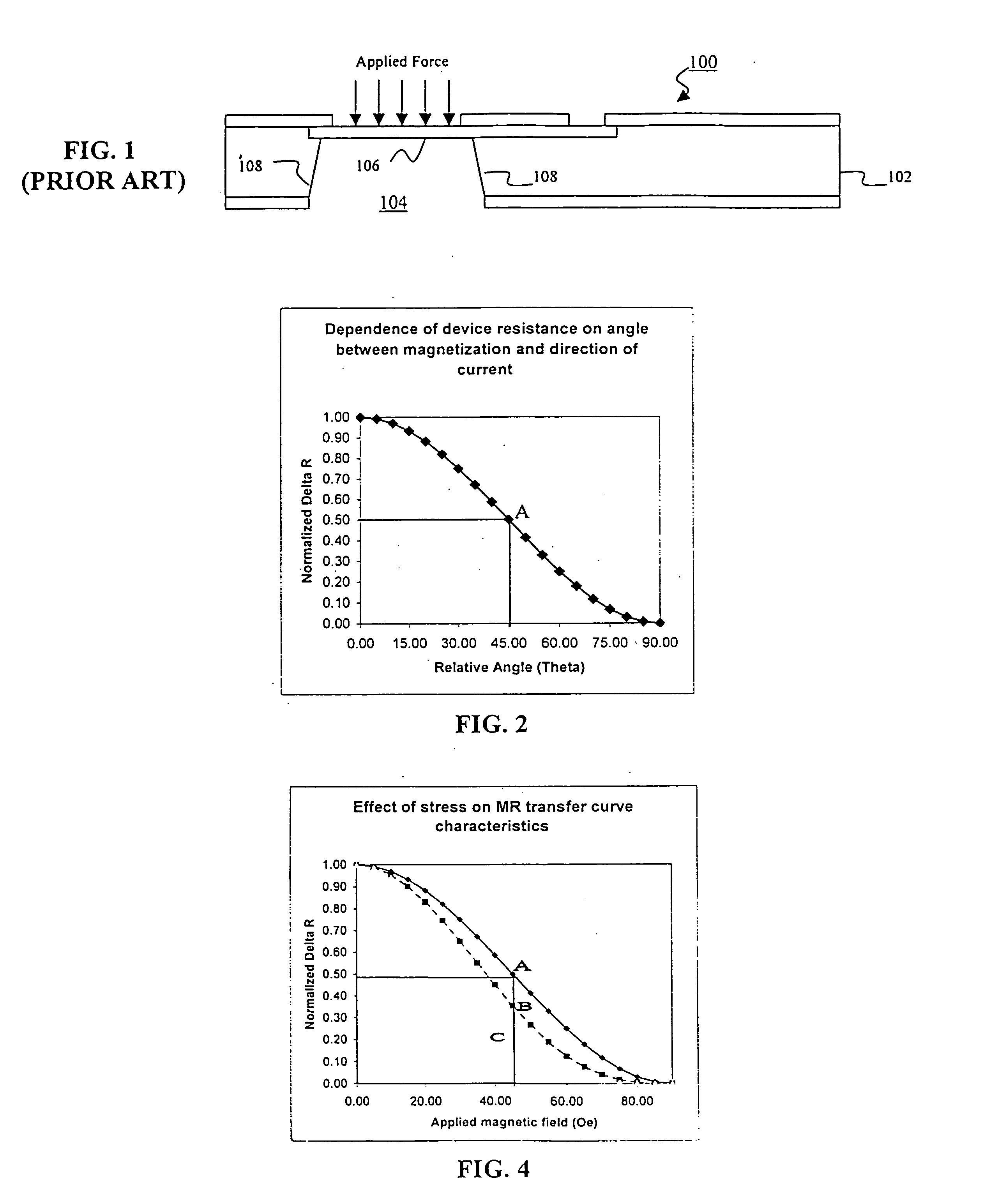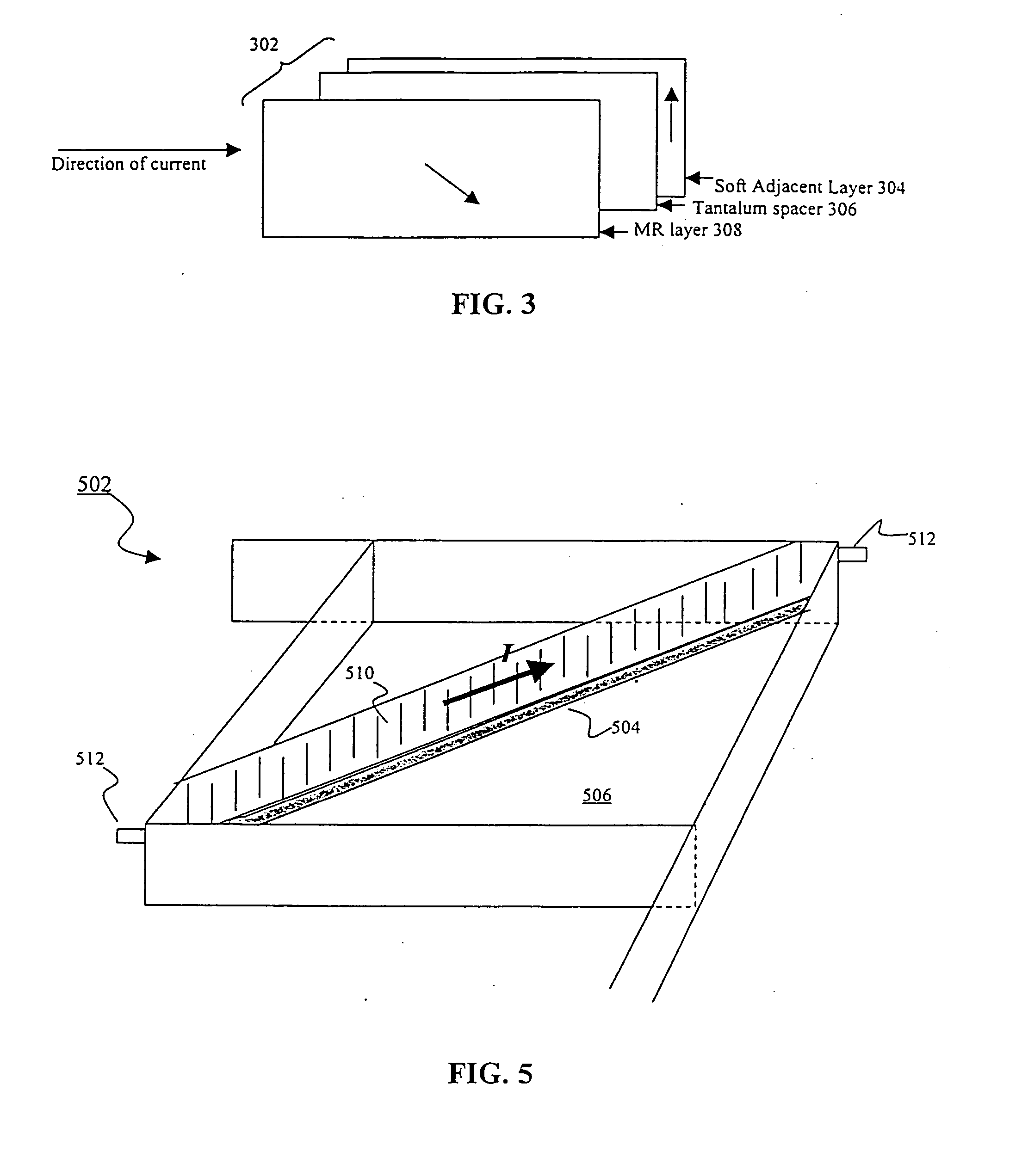Magnetoresistive semiconductor pressure sensors and fingerprint identification/verification sensors using same
a semiconductor and fingerprint detection technology, applied in the direction of instruments, fluid pressure measurement, force/torque/work measurement, etc., can solve the problems of low sensitivity of the device to applied pressure, design rules requiring relatively large chamber dimensions, and devices that are unusable, etc., to achieve high lateral resolution, maintain mechanical robustness, and high sensitivity
- Summary
- Abstract
- Description
- Claims
- Application Information
AI Technical Summary
Benefits of technology
Problems solved by technology
Method used
Image
Examples
Embodiment Construction
[0033] This invention uses a magnetoresistive element, to realize a pressure sensor with very high sensitivity while maintaining miniaturized dimensions. Magnetoresistive materials and devices have been described in great detail elsewhere (see, e.g. C. D. Mee and E. D. Daniel, “Magnetic Recording, Vol. 1: Technology,” McGraw-Hill, New York, 1987, pp. 244-336), and are extensively used in the field of magnetic recording, where the sensor is used to sense small changes in the magnetic field. The present invention exploits the properties of such materials in novel ways for uses in pressure sensors as taught below.
[0034] Magnetoresistance is a property of a material that causes the resistance of a material to change upon the application of an external magnetic field. Typically, this characteristic is defined by a parameter called (ΔR / R); the percentage resistance change over the initial resistance without the presence of an external field. This property is exhibited by many Nickel-base...
PUM
| Property | Measurement | Unit |
|---|---|---|
| length | aaaaa | aaaaa |
| length | aaaaa | aaaaa |
| thickness | aaaaa | aaaaa |
Abstract
Description
Claims
Application Information
 Login to View More
Login to View More - R&D
- Intellectual Property
- Life Sciences
- Materials
- Tech Scout
- Unparalleled Data Quality
- Higher Quality Content
- 60% Fewer Hallucinations
Browse by: Latest US Patents, China's latest patents, Technical Efficacy Thesaurus, Application Domain, Technology Topic, Popular Technical Reports.
© 2025 PatSnap. All rights reserved.Legal|Privacy policy|Modern Slavery Act Transparency Statement|Sitemap|About US| Contact US: help@patsnap.com



